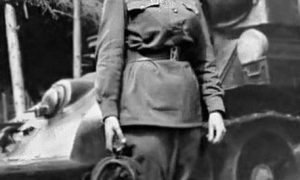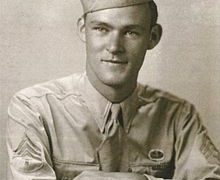SU-76 or Self-propelled gun – with a 76.2 mm gun. – Soviet self-propelled artillery installation, used in the Great Patriotic War .
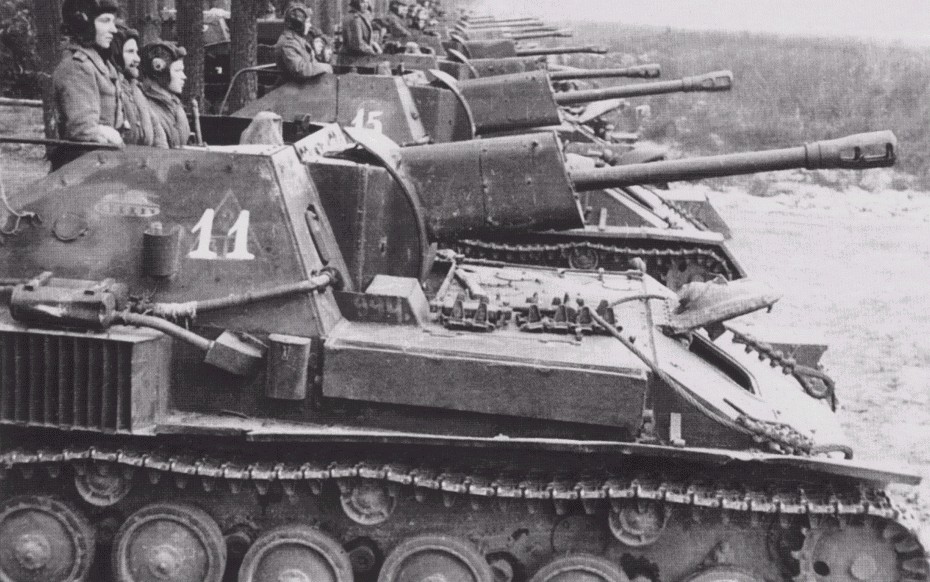
The self-propelled gun was made on the basis of light tanks T-60 , T-70 and was intended for direct support of the infantry. The main armament made it possible to fight against enemy light and medium tanks . The lightest and most massive type of self-propelled guns produced in the USSR during the Great Patriotic War and the war with Japan.
The SU-76 is a semi-open self-propelled gun with a rear-mounted fighting compartment. The driver , gas tanks, propulsion system and transmission were located in front of the vehicle’s armored hull, the engine was located to the right of the vehicle’s centerline.Ammunition , gun and workplaces of the vehicle commander, gunner and loader were located in the open top and rear conning tower .
The SU-76 was equipped with a power plant consisting of two 4-stroke inline 6-cylinder GAZ-202 carburetor engines with a capacity of 70 hp. from. ACS of late release were supplied with up to 85 hp. from. variant of the same engines. The SU-76M has an individual torsion bar suspension for each of the 6 small-diameter road wheels on each side. The drive wheels were located at the front, and the sloths were identical to the road wheels. The sighting equipment included a standard panoramic sight of the ZIS-3 gun ; some of the cars were equipped with a 9-R radio station .
The armor is differentiated bulletproof, the thickness of the upper frontal sheet is 25 mm, the inclination is 60 degrees from the vertical.
For self-defense, the crew had PPSh or PPS submachine guns and several F-1 hand grenades . On the left side of the fighting compartment, there was a DT machine gun in the stowage .
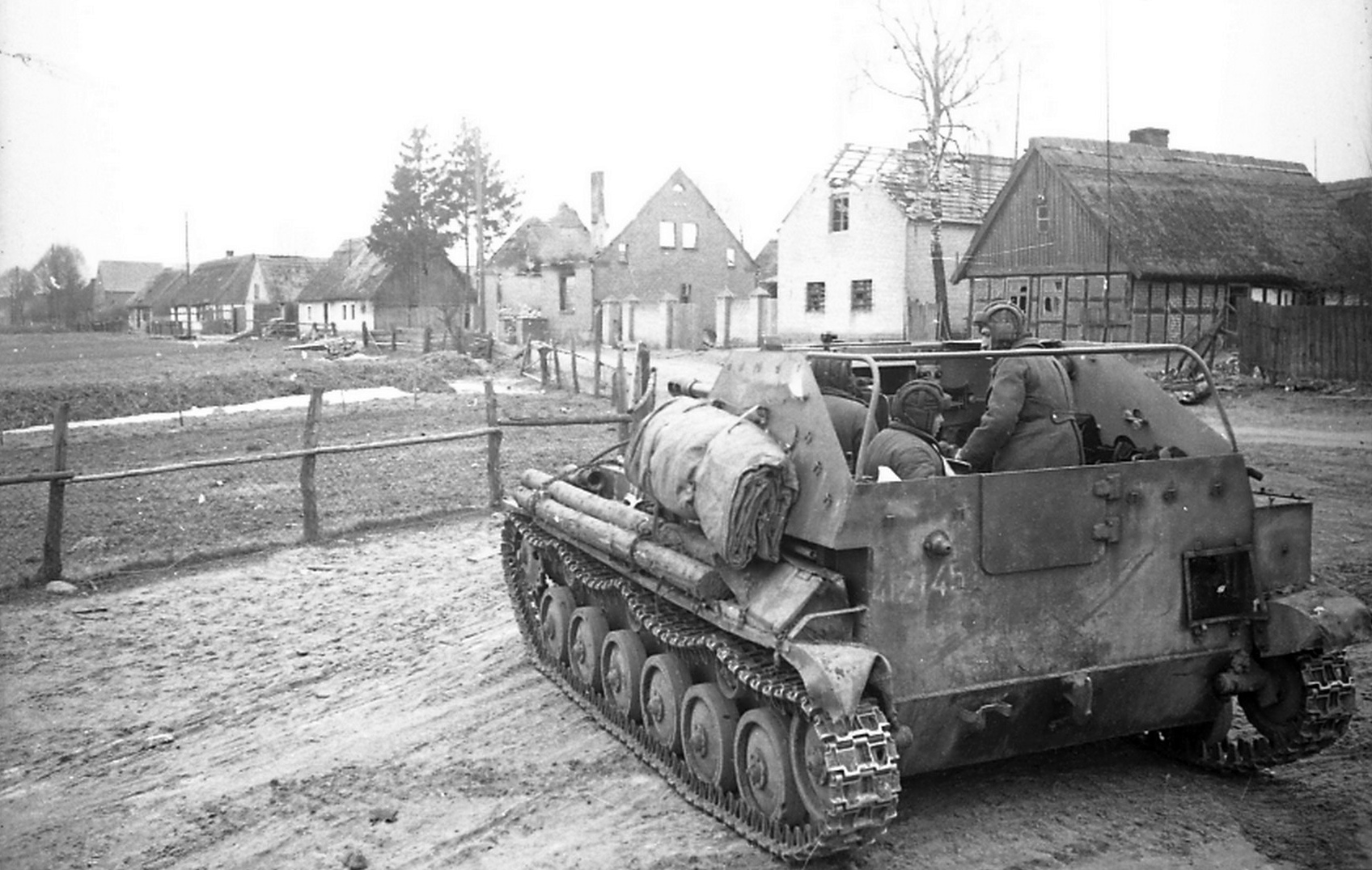
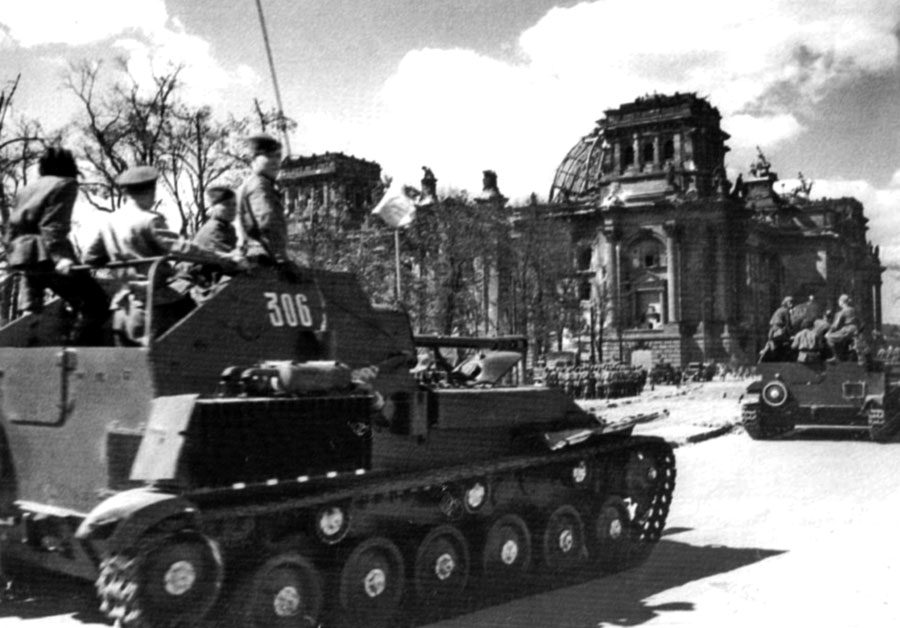
Variants
- SU-76 with parallel engine installation and armored fighting compartment roof;
- SU-76M with parallel installation of engines with increased service life and without an armored fighting compartment roof;
- SU-76 with sequential installation of engines operating on a common shaft, with a total capacity of 140 hp. from.;
- SU-76 with a propulsion system operating on a common shaft with a total capacity of 170 hp. from.
The SU-76 was intended to provide fire support for infantry in the role of a light assault gun and an anti-tank self-propelled gun . In this capacity, it replaced the light tanks of close infantry support . ACS went into service with light self-propelled artillery regiments .
However, her assessment in parts was very controversial. The infantrymen liked the SU-76 rather, since its fire was more powerful than that of the T-70 tank , and the widespread ZIS-3 cannon had a large assortment of ammunition and was well mastered by the troops , the half-open wheelhouse allowed the crew to closely interact with the infantry in urban battles… Often noted by self-propelled gunners, the machine’s weak points were bulletproof booking (although its booking was one of the strongest in the class of light self-propelled guns), the fire hazard of a gasoline engine and an open conning tower, which did not protect against small fire from above and mortars. Leaving the car in critical situations was also facilitated. The SU-76 had many positive aspects – ease of maintenance, reliability, and low noise. High maneuverability and low mass allowed her to move along wooded and swampy terrain, light gates and bridges together with the infantry.
The negative aspects of the combat use of the SU-76 often stemmed from the fact that among the command staff of the Red Army it was not always taken into account that this self-propelled gun was a light armored vehicle, and tactically equating it with a tank or an ACS based on the T-34 , KV caused unjustified losses.
As an anti-tank self-propelled gun, the SU-76 could successfully fight all types of light and medium tanks of the German armed forces (Wehrmacht) and equivalent self-propelled guns of the enemy. The SU-76 was less effective against the Panther, but it also had a chance of winning – 76-mm shells penetrated the cannon’s mask and relatively thin side armor. However, fighting the Tigers and heavier vehicles posed a problem for the SU-76. In situations like this, the instructions for the crew were to shoot at the chassis and gun barrel; hit the side at close range. The chances of self-propelled guns increased slightly after the introduction of sub-caliber and cumulativeshells to the gun. In general, for a successful fight against enemy tanks, the crew required the maximum use of the positive qualities of the SU-76. In particular, the competent use of camouflage and terrain, as well as maneuvering from one shelter dug in the ground to another, often allowed the self-propelled guns to gain a combat advantage even over heavy enemy tanks.

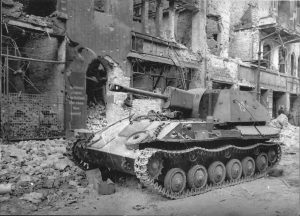
SU-76s were sometimes used for shooting from closed positions . The elevation angle of her gun was the maximum among all Soviet serial self-propelled guns, and the firing range could reach the limits of the ZIS-3 gun installed on it , that is, 13 km.
However, such an application was strongly limited by the fact that, firstly, the bursts of 76-mm shells at long distances are hardly noticeable, which complicates or makes it impossible to adjust the fire, and secondly, this requires a competent commander of a gun / battery, which during the war is not very much enough; such specialists were used mainly where it gave the greatest effect, that is, in artillery batteries from divisional and higher.
At the final stage of the war, SU-76s were also used as armored personnel carriers , vehicles for forward artillery observers, or for evacuating the wounded.



